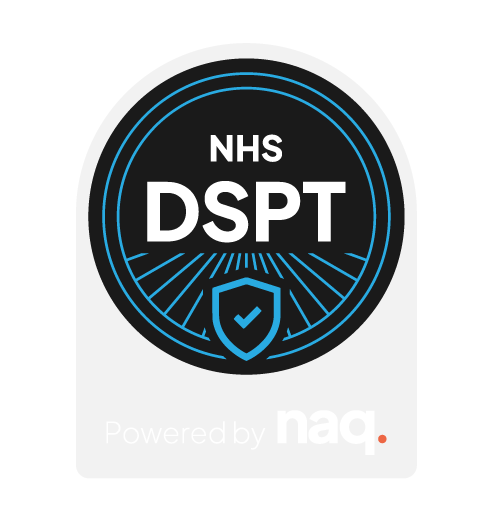DESCRIPTION
Dive into the future of children's care home software with 6 anticipated advancements. From AI-driven monitoring to virtual reality interventions, this article explores innovations like gamification, and predictive analytics. Discover how these technologies are reshaping child welfare for individualized care, enhanced family engagement, and ethical considerations, ensuring the well-being of each child.
When
December 2023
Who
George Clark

Introduction
The landscape of children's care homes is continually evolving, and the integration of technology has played a pivotal role in enhancing the quality of care provided to children. As we look toward the future, the trajectory of software development for children's care homes holds exciting possibilities. In this article, we delve into the anticipated trends that will shape the future of software solutions in children's care facilities, offering insights into the innovative advancements that will redefine the way we approach child welfare.
Artificial Intelligence (AI) in Child Monitoring:
The imminent integration of artificial intelligence (AI) into children's care home software represents a monumental leap forward in real-time monitoring. AI algorithms will provide caregivers with invaluable insights into children's daily activities, health metrics, and emotional well-being. This transformative technology aims to offer a more nuanced and responsive approach to each child's unique needs, ensuring a safer and more supportive environment.
Enhanced Data Analytics for Personalized Care Plans:
Future software solutions are set to leverage advanced data analytics, enabling caregivers to create highly personalized care plans. By meticulously analyzing individual needs, preferences, and developmental stages, this innovation ensures that each child receives a tailored approach to their care. This heightened level of personalization not only fosters a sense of security but also empowers caregivers to optimize their strategies for the benefit of the children in their care.
Virtual Reality (VR) for Therapeutic Interventions:
The incorpoof virtual reality (VR) technology is on the horizon, offering innovative therapeutic interventions for children in care homes. VR will provide immersive and customizable experiences to support emotional and psychological well-being. This forward-thinking approach acknowledges the potential of technology not just for entertainment but as a therapeutic tool to enhance the overall mental health of children under care, providing them with new avenues for self-expression and coping mechanisms.
Family Engagement Platforms:
Anticipate the development of software platforms that foster increased engagement between caregivers and the families of children in care. These platforms may include secure communication channels, real-time updates, and interactive features to keep parents informed and involved.
Gamification for Educational and Therapeutic Activities:
Software advancements will introduce gamification elements to educational and therapeutic activities, fostering engagement and interactive learning experiences for children. Gamified approaches not only make learning more enjoyable but also provide a platform for therapeutic activities, promoting the development of cognitive skills, creativity, and social interaction in a playful and supportive environment.
Remote Monitoring and Telehealth Integration:
The integration of telehealth features into children's care home software is poised to revolutionize healthcare accessibility. Healthcare professionals will have the ability to remotely monitor a child's well-being, enabling timely interventions when necessary. Examples of technologies like this include WizHero and SymmetryAI. These advancement ensures that children receive the right level of medical attention and support, irrespective of physical proximity, fostering a more resilient and adaptive healthcare system within care homes.
Conclusion:
The future of software solutions in children's care homes promises a dynamic and technologically enriched landscape. These anticipated trends reflect a commitment to enhancing the well-being, development, and individualized care of children in care facilities. As we navigate this exciting journey, it is essential to approach technological advancements with a thoughtful and ethical mindset, ensuring that innovation aligns seamlessly with the primary goal of providing the best possible care for every child.
The landscape of children's care homes is continually evolving, and the integration of technology has played a pivotal role in enhancing the quality of care provided to children. As we look toward the future, the trajectory of software development for children's care homes holds exciting possibilities. In this article, we delve into the anticipated trends that will shape the future of software solutions in children's care facilities, offering insights into the innovative advancements that will redefine the way we approach child welfare.
Artificial Intelligence (AI) in Child Monitoring:
The imminent integration of artificial intelligence (AI) into children's care home software represents a monumental leap forward in real-time monitoring. AI algorithms will provide caregivers with invaluable insights into children's daily activities, health metrics, and emotional well-being. This transformative technology aims to offer a more nuanced and responsive approach to each child's unique needs, ensuring a safer and more supportive environment.
Enhanced Data Analytics for Personalized Care Plans:
Future software solutions are set to leverage advanced data analytics, enabling caregivers to create highly personalized care plans. By meticulously analyzing individual needs, preferences, and developmental stages, this innovation ensures that each child receives a tailored approach to their care. This heightened level of personalization not only fosters a sense of security but also empowers caregivers to optimize their strategies for the benefit of the children in their care.
Virtual Reality (VR) for Therapeutic Interventions:
The incorpoof virtual reality (VR) technology is on the horizon, offering innovative therapeutic interventions for children in care homes. VR will provide immersive and customizable experiences to support emotional and psychological well-being. This forward-thinking approach acknowledges the potential of technology not just for entertainment but as a therapeutic tool to enhance the overall mental health of children under care, providing them with new avenues for self-expression and coping mechanisms.
Family Engagement Platforms:
Anticipate the development of software platforms that foster increased engagement between caregivers and the families of children in care. These platforms may include secure communication channels, real-time updates, and interactive features to keep parents informed and involved.
Gamification for Educational and Therapeutic Activities:
Software advancements will introduce gamification elements to educational and therapeutic activities, fostering engagement and interactive learning experiences for children. Gamified approaches not only make learning more enjoyable but also provide a platform for therapeutic activities, promoting the development of cognitive skills, creativity, and social interaction in a playful and supportive environment.
Remote Monitoring and Telehealth Integration:
The integration of telehealth features into children's care home software is poised to revolutionize healthcare accessibility. Healthcare professionals will have the ability to remotely monitor a child's well-being, enabling timely interventions when necessary. Examples of technologies like this include WizHero and SymmetryAI. These advancement ensures that children receive the right level of medical attention and support, irrespective of physical proximity, fostering a more resilient and adaptive healthcare system within care homes.
Conclusion:
The future of software solutions in children's care homes promises a dynamic and technologically enriched landscape. These anticipated trends reflect a commitment to enhancing the well-being, development, and individualized care of children in care facilities. As we navigate this exciting journey, it is essential to approach technological advancements with a thoughtful and ethical mindset, ensuring that innovation aligns seamlessly with the primary goal of providing the best possible care for every child.



